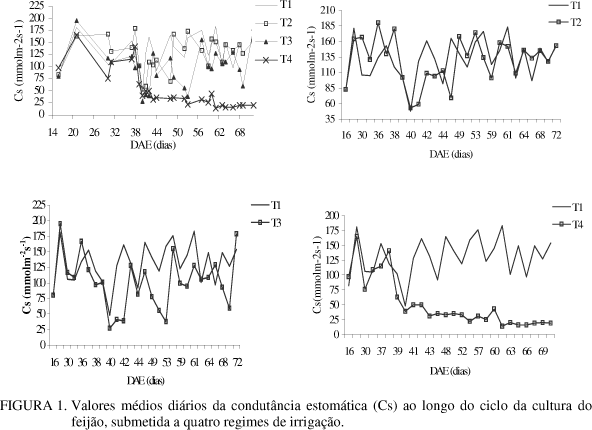The objective of this work was to evaluate the water deficit and its effects on the beans crop by the stomatal conductance as water deficit indicator. This study was carried out at the Experimental Irrigation Station of the São Paulo State University - Jaboticabal, during the 2000 agricultural seasons year. Four irrigation treatments with growing levels of ETm were studied: (T1) accumulated ETm = 22 mm; (T2) accumulated ETm = 33 mm; (T3) accumulated ETm = 44 mm; (T4) irrigation absence. In plants with appropriate supply of water, the stomatal conductance along the cycle presented maximum value around the solar noon, reaching 159 and 174 mmol m-2 s-1 for the treatment T1 and T2, respectivelly, and values of 83 and 52 mmol m-2 s-1 for the T3 and T4, respectivelly. The stomatal conductance along the cycle presented maximum value of 165 mmol m-2 s-1 for the treatment T4, while T1 and T2 obtained maximum values varied from 179 to 183 mmol m-2 s-1. The leaf temperature and the transpiration showed relation with the stomatal conductance while the photosynthetically active radiation (PAR) did not differ among the treatments.
Phaseolus vulgaris; physiological parameters; irrigation









